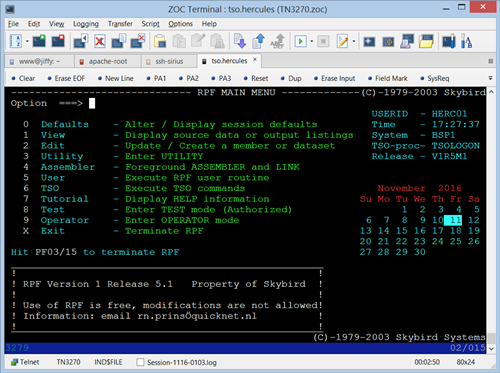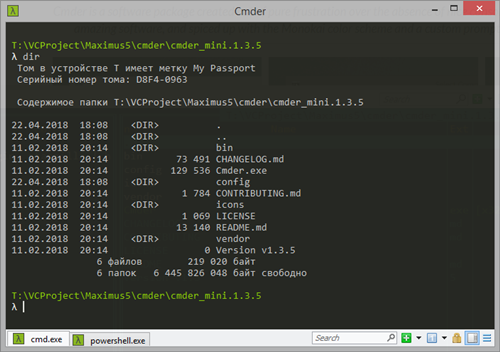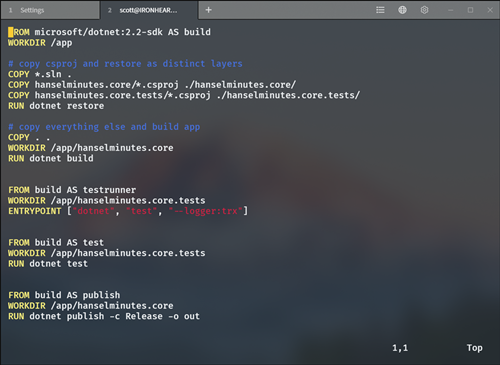The Best Terminal Emulators for Windows [June 2019]
![The Best Terminal Emulators for Windows [June 2019]](https://www.techjunkie.com/wp-content/uploads/2019/05/The-Best-Terminal-Emulators-For-Windows.jpg)
A long time ago, computers only focused on text commands. People used to type in those commands, and computers would execute them. We call those computers “terminals”, which is where the term “terminal emulator” comes from.
The main advantage of terminal emulators over the typical GUI is that it gives you more power over your computer if used correctly. There are also applications that require such programs, but they are rare and mostly related to Microsoft Visual Studio.
Windows has had its own terminal emulator, Command Prompt, for a long time. However, new terminal emulators are on the rise, often exceeding Command Prompt in capabilities, as the famous “cmd” hasn’t been updated for a long time. Here are some of the terminal emulators for Windows that are widely considered the best.
ZOC Emulator
Although expensive, ZOC is among the best terminal emulators on the market. It has amazing support, as it works on both Windows and Mac. It’s very well-organized, helping users who work with lots of hosts.

Everything in this program can be modified to suit your needs, and almost every part of the UI can be hidden. Its UI is fairly contemporary and can show multiple tabs inside its workplace at the same time. A commercial license for ZOC Emulator costs $79.99 at the time of this writing, but it does have a free 30-day trial version.
ConEmu
Created as a companion program to Far Manager, an orthodox file manager for Windows, ConEmu is a free open-source terminal emulator. Like ZOC, it is tabbed. It’s not a shell itself, meaning you can’t use shell features. However, it is an advanced console window that lets you run whichever shell you want.
It is highly customizable, as it lets you set your own hotkeys, aesthetics, and settings. Most users love using it as a “Quake-style console”, meaning you can hide and unhide it by pressing a single button.
Cmder
Built on top of ConEmu, Cmder is an emulator that extends it and adds Unix support to Windows. It has a portable and a full version, although users claim that the portable version is not as portable as it seems, since only the full one has Unix support. Keep in mind that the portable version might also require Visual C++ Redistributable.

Cmder users are very satisfied with its File Explorer and GUI applications integration, as well as additional benefits such as a Quake-style console and a Monokai color scheme, well-known to users of Sublime Text and Visual Studio Code. However, some have found it slower than ConEmu and noticed some conflicts with Windows’ hotkeys.
Terminus
Terminus is great because it’s an open-source, cross-platform emulator that integrates well with PowerShell, Git BASH, Cmder, WSL, Cygwin and Clink. It also has an integrated SSH client and split panes.

It’s been called beautiful for its themes, color schemes, font settings, etc. Therefore, it might be a great choice if you’re really into aesthetics. Plugins are also its strong suit, as it comes with a few by default. Its downsides are its size and speed, as users occasionally complained about it being too big and too slow.
Mintty
Mintty is another open-source emulator with its own interesting advantages. It supports emojis, scrolling using the mouse wheel, drag-and-drop, showing multiple fonts at the same time, UTF-8 characters, and various character styles, such as italics and underlined letters.
Based on PuTTY code, Mintty works with Cygwin, MSYS, and MSys2, so if you’re using any of those, this emulator is highly recommended. Mintty is also part of Git, which anyone who has it will find useful.
PuTTY
PuTTY is one of the oldest emulators around. It’s open-source and works great with network protocols such as SSH, Telnet, and rlogin. Its ease of use is apparent from the get-go, as it works as soon as you set it up. It also has documentation, making it beginner-friendly.
It has been criticized for being “just an SSH client” and lacking many other options, but if you’re looking for an emulator that supports network protocols, you’re in the right place. Unfortunately, it does not support tabs and global settings, meaning you can’t make a single change for all the connections.
Making a Choice
Which one should you go with in the end? If budget isn’t an issue, go with ZOC, but you can try it out first for free as well. Otherwise, Cmder is the most popular these days, but ConEmu might work faster for you. Terminus has a lot of aesthetic settings, while Mintty and PuTTY work with specific environments, which makes them great choices if you happen to be using exactly those.
Hope you found this list helpful. Let us know either way and of course, your new favorite terminal emulator.
















